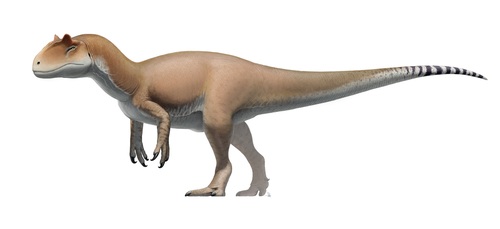
Allosaurus
Allosaurus fragilis, a formidable Jurassic predator, stood as a bipedal hunter with sharp teeth and a strong tail for balance. Dominating North America's ancient landscapes, it played a crucial role in the ecosystem, showcasing agility and strength as it pursued prey across diverse terrains.
2086.47853 - 2585.51479 kg
Weight
Length: 8.535 - 9.754 m; Height: 4.572 - 5.0295 m
Size
Low
Aggression
Characteristics
Allosaurus fragilis, an apex predator of the Late Jurassic period, roamed the forests and plains of North America. It was about 28 feet long, with a robust skull equipped with sharp, serrated teeth. Known for its bipedal stance, it had powerful hind limbs and a long, muscular tail for balance and agility.
Distribution Range of the Allosaurus
Allosaurus fragilis is known to have lived during the Late Jurassic period, approximately 155 to 145 million years ago. Fossil evidence suggests that this dinosaur was primarily native to what is now western North America, including regions such as the Morrison Formation that spans parts of the United States including Colorado, Wyoming, Utah, and New Mexico. Additional evidence has also suggested potential habitats in Portugal, indicating a wider distribution across parts of what was then the supercontinent Laurasia.
Allosaurus's Habitat
Environmental Conditions
During the Late Jurassic, the regions inhabited by Allosaurus fragilis were characterized by a semi-arid climate with distinct wet and dry seasons. The environment was akin to a savanna, with open woodlands, riverine forests, and a variety of plant life including conifers, cycads, and ferns. This landscape provided a rich ecosystem with abundant prey.
Ecological Niche
Allosaurus fragilis was a top predator and played a crucial role in its ecosystem as a carnivorous dinosaur. It likely fed on large herbivorous dinosaurs such as stegosaurs and sauropods. Its ecological niche involved being an apex predator, utilizing its physical adaptations such as sharp teeth and powerful limbs to hunt and scavenge for food. It may have also displayed social behaviors, possibly hunting in groups to take down larger prey.
Copyright @ Nature Style Limited. All Rights Reserved.
 English
English